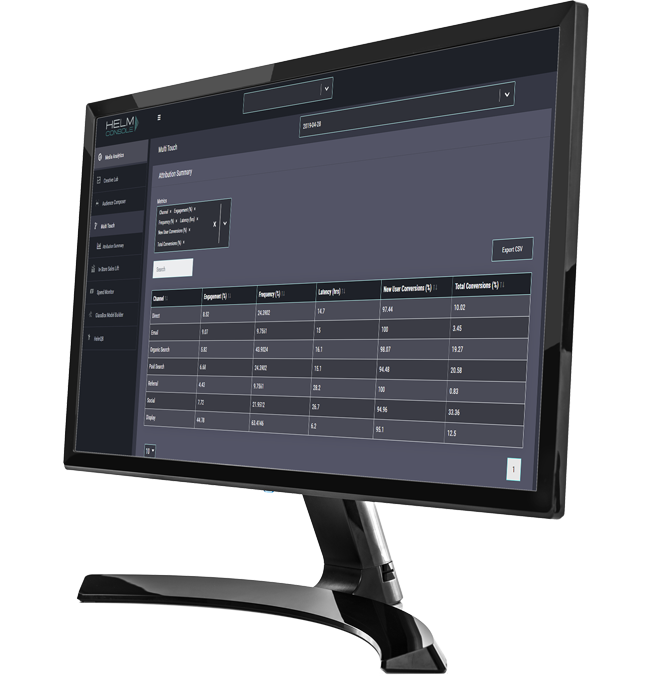

Sometimes, marketers wrongly think that they need to choose the “correct” attribution model and base all their analysis on that data. You can use single-touch models like first-touch and last-touch, as well as multi-touch models like position-based and time decay.ģ) Compare Attribution Models For Best Results This is helpful for advanced content analysis that requires conversion path information and content attribution.Īssuming you’ve solved for identity and are capturing the necessary touchpoint data, you can start building attribution models to analyze that data. If you want to take your analytics to the next level, I also recommend that you track form page URLs and pages visited prior to a form page URL. Together, these three data points give you enough information to assess when, where, and how the touchpoint happened.
#MULTITOUCH ATTRIBUTION REPORTINGSALESFORCE FULL#

Knowing when the interaction happened lets you get a better sense of user paths and opens up different attribution models for analysis. Date and timestamp are pretty self-explanatory.These are usually DateTime (date and timestamp), referring URL, and landing page URL. In addition to a personal identifier, you need to ensure your analytics tool is capturing a minimum of three data points for each touchpoint. It’s much easier to tie down-funnel interactions and purchases to an email address than a long alphanumeric string that means nothing to anyone. I recommend using a lead’s email address as your main post-lead-capture identifier. You can use a spreadsheet, a marketing automation platform, or even a CRM to store this data.Ĥ) Choose a more meaningful (and durable) unique identifier for down-funnel interactions and analysis. It associates any unique cookie values configured to be captured with the tracked phone call.ģ) Determine where you will store and how you will unify each unique personal identifier with its respective session data upon a lead capture event. Many call tracking tools call this feature custom cookie capture. Google Analytics client id) when the user submits a form, initiates a live chat conversation, or makes a phone call. (More on this in the “Capture the right data” section.)Ģ) Set up your forms with a hidden field to pass the unique personal identifier (e.g. Make sure, however, that you can easily export the other session data you’ll need for channel/content analysis. Make sure you use the same identifier across your entire website so you can associate it with web session data and lead capture events.Īs far as tools are concerned, it doesn’t really matter which one you use. Migrate from your existing marketing automation platform (e.g.1) Determine which unique personal identifier you will use for identity resolution, or build custom JavaScript to set a cookie value with your own unique personal identifier.Analyze website behaviour to deliver an optimized email communication strategy to help increase overall customer engagement.Develop a go-to-market strategy with tactical execution programs to attract and engage with your target audiences across multiple channels.

Build cross-departmental efficiencies to help align and improve relationships between your Marketing and Sales teams.Track and measure the progression of leads from initial inquiry, to MQL (Marketing Qualified Leads), to SAL (Sales Accepted Leads), to SQL (Sales Qualified Leads) and Closed Won deals.Justify the business case for all your B2B and B2C marketing campaigns with campaign attribution reporting (first-touch, last-touch and multi-touch attribution).Nurture existing relationships and build new ones that provide your Sales team with more insight into their prospects and accounts.Generate high quality top of the funnel leads through personalized and targeted marketing campaigns.


 0 kommentar(er)
0 kommentar(er)
